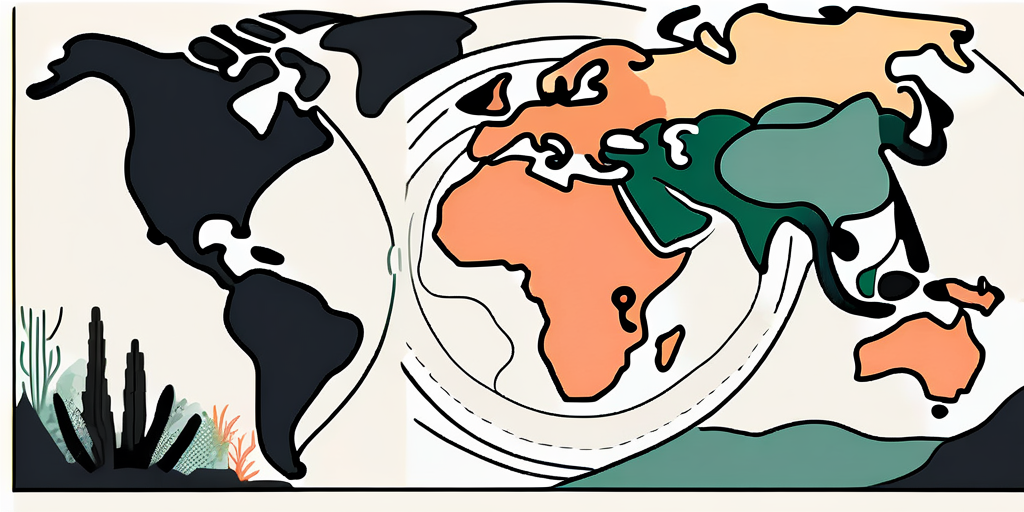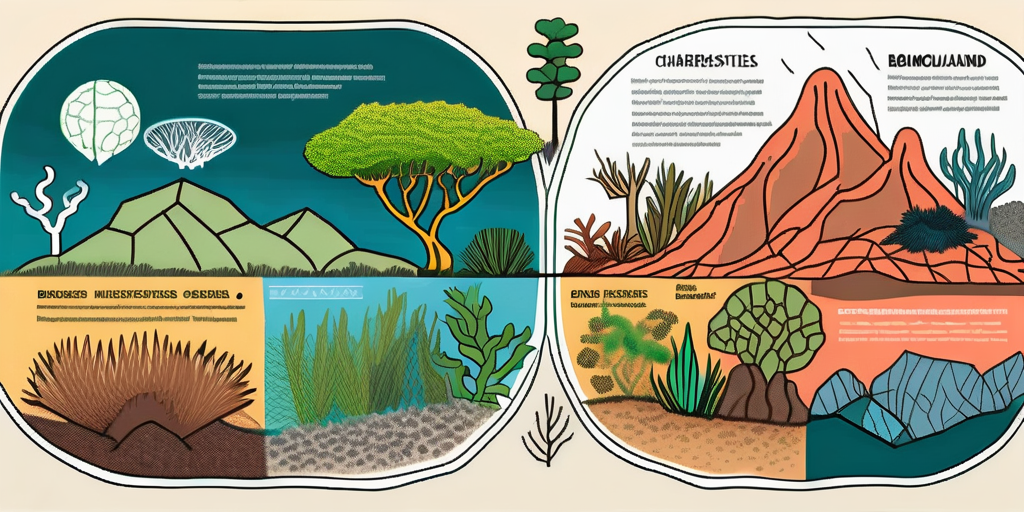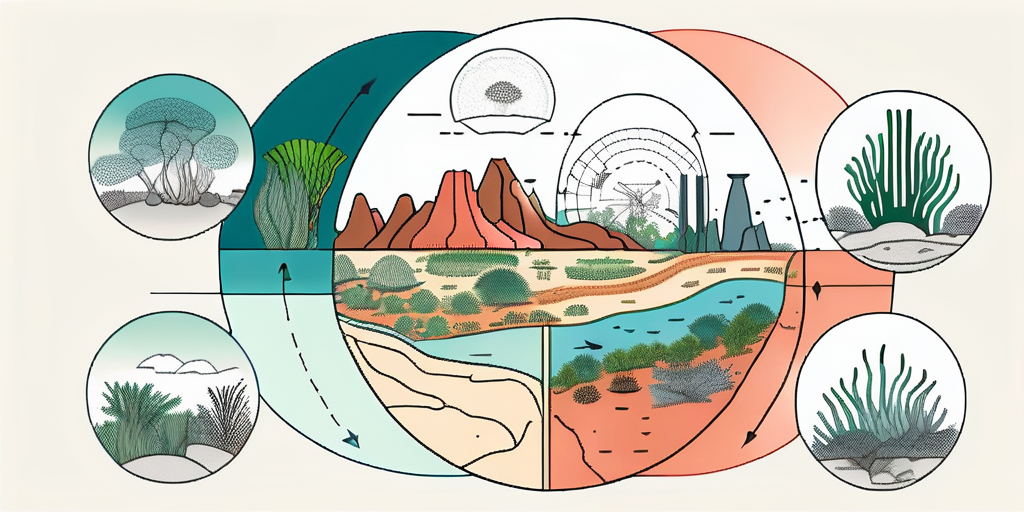how many biomes are there
Biomes are fascinating and diverse ecosystems that cover our planet. Understanding biomes is key to appreciating the beauty and complexity of nature. In this article, we will explore the different types of biomes, their characteristics, and the impact humans have on these fragile environments.
Understanding Biomes
Definition of Biomes
Before we delve into the intricacies of biomes, let’s first define what they are. Biomes are distinct geographical areas characterized by their climate, plant, and animal life. They are often classified based on factors such as temperature, precipitation, and vegetation.
Importance of Biomes
Biomes play a crucial role in maintaining the delicate balance of our planet’s ecosystems. They not only provide habitats for a wide variety of plant and animal species but also contribute to global climate regulation. Additionally, biomes offer valuable resources that sustain human populations worldwide, such as food and medicine.
One fascinating aspect of biomes is the incredible diversity they exhibit. From the lush rainforests of the Amazon to the frigid tundra of the Arctic, each biome has its own unique set of characteristics and inhabitants. For example, the tropical rainforests are known for their dense vegetation and high biodiversity, housing countless species of plants, animals, and insects. On the other hand, the desert biome is characterized by its extreme aridity, with sparse vegetation and specialized animals that have adapted to survive in harsh conditions.
Another interesting feature of biomes is their ability to change over time. Due to various natural and human-induced factors, biomes can undergo transformations that alter their composition and structure. For instance, deforestation and climate change can lead to the degradation of once-thriving biomes, causing a loss of biodiversity and disrupting the delicate ecological balance. Understanding these changes and their impacts is crucial for developing effective conservation strategies and ensuring the long-term sustainability of our planet.
The Five Major Biomes
Aquatic Biomes
Aquatic biomes include both freshwater and marine ecosystems. From pristine coral reefs teeming with vibrant marine life to serene lakes and winding rivers, these biomes house an astounding array of plants and animals. They provide us with valuable resources and are essential for maintaining the health of our oceans and waterways.

Imagine diving into the crystal-clear waters of a coral reef, surrounded by a kaleidoscope of colorful fish and swaying sea anemones. The vibrant hues of the coral formations create a mesmerizing underwater landscape, while schools of tropical fish dart in and out of the intricate crevices. The aquatic biome is a world of wonder, where delicate seahorses gracefully navigate through the swaying kelp forests, and majestic whales breach the surface, leaving us in awe of their sheer size and power.
Desert Biomes
Desert biomes may seem desolate at first glance, but they are teeming with life that has adapted to the harsh conditions. From cacti that store water to lizards that can survive without drinking, desert biomes showcase nature’s resilience. These dry landscapes are both breathtaking and awe-inspiring.
Picture yourself standing on a vast expanse of golden sand dunes, the scorching sun beating down on your back. In the distance, you spot a lone saguaro cactus, its arms reaching towards the sky as if in defiance of the arid environment. As you explore further, you come across a hidden oasis, a shimmering pool of water surrounded by palm trees. Desert biomes are full of surprises, with hidden pockets of life that thrive against all odds.
Forest Biomes
Forest biomes are the lush green lungs of our planet. They are home to an incredible diversity of plants and animals. From the towering canopies of tropical rainforests to the vast stretches of towering conifers in temperate forests, these biomes provide us with oxygen, timber, and a sanctuary for countless species.
Step into a tropical rainforest, where the air is thick with humidity and the sounds of chirping birds and buzzing insects fill your ears. The forest floor is a carpet of vibrant foliage, with exotic flowers blooming in a riot of colors. Above you, monkeys swing effortlessly from tree to tree, while elusive jaguars prowl silently through the undergrowth. Forest biomes are a treasure trove of biodiversity, with each layer of the ecosystem offering a unique habitat for a multitude of species.
Grassland Biomes
Grassland biomes are characterized by expansive fields of grasses, scattered trees, and varied wildlife. These open landscapes support grazing animals and offer fertile soil for agriculture. They are picturesque vistas that embody the untamed beauty of nature.
Imagine standing on a vast savannah, the golden grasses swaying gently in the breeze. Herds of wildebeest graze peacefully, while lions and cheetahs prowl the grasslands, their sleek bodies blending seamlessly with the surroundings. The grassland biome is a symphony of life, with the rhythmic chirping of grasshoppers and the distant call of birds creating a soothing melody that resonates through the open plains.
Tundra Biomes
The tundra biome is found in cold regions with a short growing season. These barren landscapes might seem devoid of life, but they are home to unique animals like polar bears and Arctic foxes. The tundra’s frozen beauty reminds us of the adaptability of life in extreme conditions.
Imagine stepping onto the frozen expanse of the Arctic tundra, the air crisp and biting. The ground beneath your feet is covered in a thick layer of permafrost, and the only signs of life are the tracks left by a passing reindeer. As you scan the horizon, you spot a polar bear in the distance, its white fur blending seamlessly with the snow-covered landscape. The tundra biome is a harsh yet mesmerizing environment, where the resilience of its inhabitants is a testament to the incredible adaptability of life.
Characteristics of Different Biomes
Climate and Weather Patterns
One of the essential aspects of biomes is their distinctive climates and weather patterns. From the scorching heat of desert biomes to the frigid temperatures of tundra biomes, each biome presents a unique set of challenges for the plants and animals that call them home.

Desert biomes, for example, are known for their extreme aridity, with little to no rainfall and high temperatures during the day. The plants and animals that thrive in these harsh conditions have adapted remarkable survival strategies. Cacti, with their ability to store water, and reptiles, with their ability to regulate body temperature, are just a few examples of the incredible adaptations found in desert biomes.
Plant and Animal Life
Biomes are characterized by the diverse plant and animal species that inhabit them. From the lush vegetation of forest biomes to the vast grasslands stretching out before us, each biome showcases a remarkable array of life. From tiny insects to majestic mammals, each species plays a vital role in the delicate web of life.
Forest biomes, with their towering trees and dense undergrowth, are home to a multitude of species. Birds flit through the branches, squirrels scurry along the forest floor, and deer graze on the abundant vegetation. The interconnectedness of these organisms is awe-inspiring, as they rely on each other for food, shelter, and even pollination.
Geographical Locations
Biomes occur in different parts of the world, each with its own distinct geography. Forest biomes thrive in temperate regions, while desert biomes are predominantly found in arid areas. Understanding the geographical distribution of biomes can help us appreciate the unique environments our planet has to offer.
Take, for instance, the tropical rainforest biome, which is found near the equator. These lush and vibrant ecosystems are characterized by high levels of rainfall and year-round warmth. The dense canopy of trees creates a unique microclimate, with a constant supply of moisture and shade. This environment supports an incredible diversity of plant and animal life, making tropical rainforests one of the most biodiverse biomes on Earth.
Human Impact on Biomes
Deforestation and Its Effects
One of the most significant threats to biomes is deforestation. The clearing of forests for agriculture, logging, and urbanization has led to the loss of precious habitat and the extinction of numerous species. It is crucial that we recognize the value of these ecosystems and take steps to protect them from further destruction.

Deforestation not only affects the flora and fauna within biomes but also disrupts the delicate balance of the entire ecosystem. When trees are cut down, the soil becomes exposed to erosion, leading to the loss of fertile topsoil. This, in turn, affects the nutrient cycle and can result in decreased agricultural productivity. Additionally, deforestation contributes to climate change as trees play a crucial role in absorbing carbon dioxide from the atmosphere. Without these natural carbon sinks, the concentration of greenhouse gases in the atmosphere increases, further exacerbating the effects of climate change.
Climate Change and Biomes
Climate change is another major concern for biomes worldwide. Rising temperatures, altered precipitation patterns, and more frequent extreme weather events threaten the delicate balance of these ecosystems. It is imperative that we address the causes of climate change and work towards finding sustainable solutions.
The impacts of climate change on biomes are far-reaching. For example, rising temperatures can lead to the melting of polar ice caps, causing a rise in sea levels. This not only affects coastal biomes but also disrupts the migration patterns of various species, leading to changes in their distribution and potentially endangering their survival. Additionally, altered precipitation patterns can result in droughts or floods, both of which can have devastating effects on the flora and fauna within biomes. These changes in climate can disrupt the intricate web of interactions within ecosystems, leading to cascading effects throughout the entire biome.
Conservation Efforts for Biomes
Fortunately, there are dedicated individuals and organizations working tirelessly to protect and restore biomes. Conservation efforts such as reforestation, protected area designation, and sustainable land management practices are crucial steps in preserving these invaluable ecosystems for future generations.
Reforestation plays a vital role in restoring the balance within biomes. By planting trees in areas that have been deforested, we can help to recreate the habitat that was lost and provide a home for a diverse range of species. Protected area designation is another essential conservation strategy. By establishing national parks, wildlife reserves, and other protected areas, we can ensure that biomes are safeguarded from further human encroachment and exploitation. Additionally, implementing sustainable land management practices, such as agroforestry and rotational grazing, can help to minimize the negative impacts of human activities on biomes while still meeting our needs for food and resources.
Frequently Asked Questions about Biomes
How are Biomes Formed?
Biomes are formed through a combination of factors, including climate, topography, and geological history. Over thousands of years, these elements interact to create distinct ecosystems that are uniquely suited to their specific regions.
Let’s delve deeper into the process of biome formation. Climate plays a crucial role in shaping biomes. Temperature and precipitation patterns determine the types of plants and animals that can thrive in a particular area. For example, tropical rainforests are found in regions with high temperatures and abundant rainfall, while deserts are characterized by extreme heat and minimal precipitation.
Topography, or the physical features of the land, also influences biome formation. Mountains, valleys, and bodies of water can create microclimates within larger biomes. These microclimates can support different types of vegetation and provide unique habitats for various species.
Can Biomes Change Over Time?
Yes, biomes can change over time. Natural processes such as climate fluctuations and geological events can lead to shifts in biomes. Additionally, human activities can cause rapid changes in biomes, often resulting in habitat destruction and loss of biodiversity.
Climate change is one of the most significant drivers of biome change in recent times. Rising temperatures and altered precipitation patterns can cause shifts in vegetation zones, leading to the expansion or contraction of certain biomes. For example, scientists have observed the gradual northward movement of the boreal forest biome due to warming temperatures.
Human activities, such as deforestation and urbanization, also have a profound impact on biomes. The clearing of forests for agriculture or logging can disrupt the delicate balance of ecosystems, leading to the conversion of one biome into another. Similarly, the rapid growth of cities can fragment habitats and displace native species, altering the composition of biomes.
What is the Smallest Biome?
The smallest biome on Earth is the tundra biome. Its limited geographical range and harsh conditions make it a challenging environment for life. However, despite its small size, the tundra biome is home to unique and resilient species that have adapted to survive in this extreme environment.
The tundra biome is characterized by its cold temperatures, strong winds, and permafrost. It is found in the high latitudes of the Arctic and Antarctic regions, as well as on high mountain peaks. The vegetation in the tundra consists mainly of low-growing plants, such as mosses, lichens, and dwarf shrubs, which are adapted to survive in the nutrient-poor soil and short growing season.
Despite its inhospitable conditions, the tundra biome supports a surprising variety of wildlife. Iconic species such as polar bears, Arctic foxes, and reindeer have evolved specialized adaptations to thrive in this harsh environment. The tundra also serves as a crucial breeding ground for migratory birds, providing them with a safe haven during the summer months.
As we explore the world of biomes, we become aware of the intricate connections between species, habitats, and the planet as a whole. Each biome is a precious piece of the ecological puzzle, and it is our responsibility to appreciate, protect, and conserve these diverse and awe-inspiring ecosystems.



